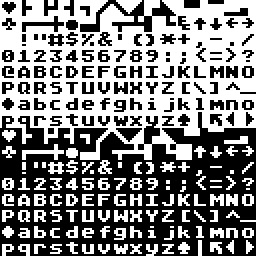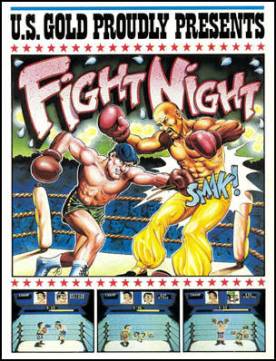Related Research Articles

Atari ST is a line of personal computers from Atari Corporation and the successor to the company's 8-bit home computer line. The initial model, the Atari 520ST, had limited release in April–June 1985, and it was widely available in July. The ST was the first personal computer with a bitmapped color graphical user interface, using a version of Digital Research's GEM interface / operating system, from February 1985.

WordPerfect (WP) is a word processing application, now owned by Alludo, with a long history on multiple personal computer platforms. At the height of its popularity in the 1980s and early 1990s, it was the dominant player in the word processor market, displacing the prior market leader WordStar.

The Atari 8-bit computers, formally launched as the Atari Home Computer System, are a series of 8-bit home computers introduced by Atari, Inc. in 1979 with the Atari 400 and Atari 800. It is the first home computer architecture with coprocessors, enabling more advanced graphics and sound than most of its contemporaries. Video games are key to its software library, and the 1980 first-person space combat simulator Star Raiders is considered the platform's killer app.

Atari BASIC is an interpreter for the BASIC programming language that shipped with Atari 8-bit computers. Unlike most American BASICs of the home computer era, Atari BASIC is not a derivative of Microsoft BASIC and differs in significant ways. It includes keywords for Atari-specific features and lacks support for string arrays.

Silent Service is a submarine simulator video game designed by Sid Meier and published by MicroProse for various 8-bit home computers in 1985 and for 16-bit systems like the Amiga in 1987. A Nintendo Entertainment System version developed by Rare was published in 1989 by Konami in Europe and by Konami's Ultra Games subsidiary in North America. Silent Service II was released in 1990. Tommo purchased the rights to this game and published it online through its Retroism brand in 2015.

The ATASCII character set, from ATARI Standard Code for Information Interchange, alternatively ATARI ASCII, is a character encoding used in the Atari 8-bit home computers. ATASCII is based on ASCII, but is not fully compatible with it.
Cut & Paste is a word processor published in 1984 for Apple II series, Atari 8-bit computers, Commodore 64, IBM PC compatibles, and IBM PCjr. It is one of the few productivity releases from game developer and publisher Electronic Arts, along with the contemporaneous Financial Cookbook. In the UK it was distributed by Ariolasoft.
Optimized Systems Software (OSS) was a company that produced disk operating systems, programming languages with integrated development environments, and applications primarily for Atari 8-bit computers. The founders of OSS previously developed Atari DOS, Atari BASIC, and the Atari Assembler Editor for Atari, Inc., and many OSS products are substantially improved versions. OS A+ and DOS XL are based on Atari DOS. BASIC A+, BASIC XL, and BASIC XE are based on Atari BASIC. EASMD and MAC/65 are modeled on the Atari Assembler Editor. Action! is an ALGOL-inspired compiled programming language with an integrated full-screen editor. OSS also sold some software for the Apple II.

PaperClip is a word processor for the Commodore 64, 128, and Atari 8-bit family published by Batteries Included in 1985. In the United Kingdom it was published by Ariolasoft.

AtariWriter is a word processor program for the Atari 8-bit computers released by Atari as a 16 kB ROM cartridge in 1983. The program was fast and easy to use, while still allowing for the creation of fairly complex documents. It was a success for the platform, with at least 800,000 units initially sold, not including international versions and later updates.

Microsoft Write is a basic word processor included with Windows 1.0 and later, until Windows NT 3.51. Throughout its lifespan it was minimally updated, and is comparable to early versions of MacWrite. Early versions of Write only work with Write Document (.wri) files, which are a subset of the Rich Text Format (RTF). After Windows 3.0, Write became capable of reading and composing early Word Document (.doc) files. With Windows 3.1, Write became OLE capable. In Windows 95, Write was replaced with WordPad; attempting to open Write from the Windows folder will open WordPad instead.
Bank Street Writer is a word processor for the Apple II, Atari 8-bit family, Commodore 64, MSX, Macintosh, IBM PC, and IBM PCjr computers. It was designed in 1981 by a team of educators at the Bank Street College of Education in New York City, software developer Franklin E. Smith, and programmers at Intentional Educations in Watertown, Massachusetts. The software was sold in two versions: one for elementary school students published by Scholastic and a general version from Broderbund.
ST Writer is a word processor program for the Atari ST series of personal computers. It was introduced by Atari Corporation in 1985 along with the 520ST, the first machine in the ST family. It is a port of Atari's AtariWriter Plus from the earlier 8-bit computer series, matching it closely enough to share files across platforms unchanged. Running on the ST allowed it to display a full 80-column layout, create much larger files, and support additional features.
Xetec was founded in 1983 by Jon Flickinger, and was located in Salina, Kansas, United States. Before closing in 1995, the company produced many third-party products for the Commodore 64, Commodore 128, Amiga, Macintosh, Atari ST and PC computers.

Many games, utilities, and educational programs were available for Atari 8-bit computers. Atari, Inc. was primarily the publisher following the launch of the Atari 400/800 in 1979, then increasingly by third parties. Atari also distributed "user written" software through the Atari Program Exchange from 1981 to 1984. After APX folded, many titles were picked up by Antic Software.

The Chessmaster 2000 is a computer chess game by The Software Toolworks. It was the first in the Chessmaster series and published in 1986. It was released for Amiga, Apple II, Atari 8-bit family, Atari ST, ZX Spectrum, Commodore 64, Amstrad CPC, MSX, Macintosh, and IBM PC compatibles.

Temple of Apshai Trilogy is a remake of three games from the Dunjonquest series, Temple of Apshai, Upper Reaches of Apshai, and Curse of Ra.

1st Word is a word processor program for the Atari ST developed by GST Computer Systems and published in 1985. It was given away with all ST systems from December 1985 for the next two years. Although it was relatively well received, it was a very simple program, lacking most power features and was very slow when working in large documents. In spite of any limitations, its wide availability made the program's .DOC file format became a de facto standard for the platform and was widely supported by other programs like desktop publishing systems.

Fight Night is a boxing video game developed by Sydney Development Corporation and published by Accolade in the United States and by U.S. Gold in the United Kingdom. It was initially released in 1985 for the Apple II, Atari 8-bit family, and Commodore 64. The game includes both a single player mode and multiplayer mode. It includes the ability to customize the player's boxer. In total, there are five boxers to beat.

Atari Word Processor is a word processor program for the Atari 8-bit computers, announced by Atari, Inc. in January 1981 and shipped that summer. The program was powerful for its era, including numerous features like superscripts and two-column layouts. It was also quite complex, with a long list of control keys for basic operations and text-based menus for more complex ones. It left little memory free after loading, so longer documents had to be stored as separate files of about a page each and printing demanded a long re-formatting process as they were stitched together.
References
- 1 2 The First XLEnt Word Processor Manual. Springfield, Virginia, USA: XLEnt Software. 1986 – via archive.org.
- 1 2 3 Cherry, Charles (January 1987). "Feature Review: First XLEnt Word Processor". Antic. Vol. 5, no. 9.
- 1 2 3 Pearlman, Gregg (February 1987). "Word Processors: 7 For The 8-Bit". Antic. Vol. 5, no. 10.
- ↑ Friedland, Nat (May 1987). "Antic Awards". Antic. Vol. 6, no. 1.
- ↑ Pearlman, Gregg (December 1987). "New Products: The First XLEnt Word Processor V. 2.1". Antic. Vol. 6, no. 8.